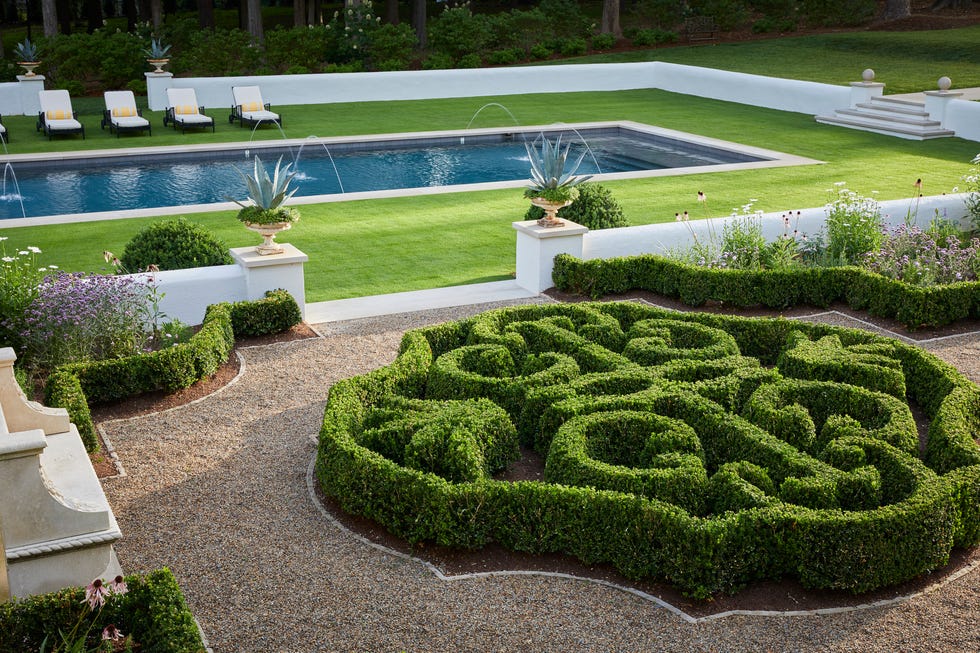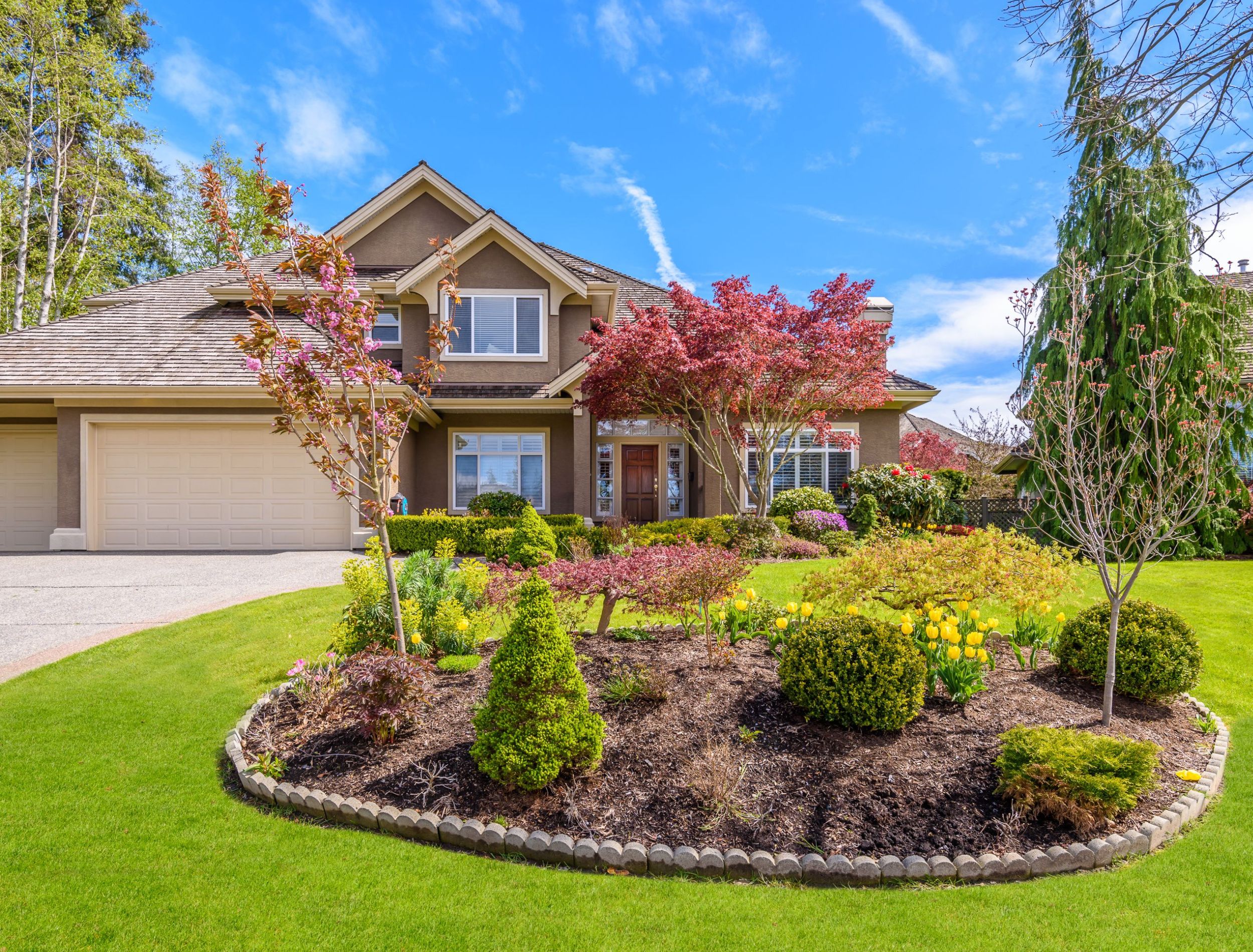Outdoor Lighting Installer vs. Landscape Lighting Installer: What’s the Difference?
Wiki Article
Exploring Various Kinds Of Landscaping to Boost Your Outdoor Atmosphere
Landscape design plays an essential duty in defining outside areas. Numerous styles, from conventional gardens to contemporary minimal designs, offer unique benefits for boosting looks and feature. Incorporating components like xeriscaping and indigenous plants can add to eco-friendly balance. Recognizing the interaction of hardscape and softscape is vital for developing welcoming settings. The selections readily available can be overwhelming, prompting one to mirror on which design finest lines up with their vision for an outdoor refuge.Conventional Garden Landscaping

While numerous modern-day yards accept minimalism and indigenous plantings, conventional yard landscape design stays a valued method that highlights proportion, structure, and decorative features. This style usually includes official geometric layouts, where pathways, flowerbeds, and bushes are arranged with precision. Central prime focus, such as sculptures or water fountains, attract the eye and supply a sense of harmony.Traditional landscaping often includes a variety of plant types, showcasing seasonal blossoms and evergreen elements. Classic hedges, perennials, and annuals develop vivid colors and appearances throughout the year. Additionally, trellises, arches, and pergolas add vertical passion and act as support for climbing plants, boosting the total aesthetic.The use all-natural materials, such as stone and wood, more improves the conventional landscape, adding to a classic top quality. Inevitably, this design welcomes leisure and enjoyment, making it a precious choice for those looking for a stunning outdoor atmosphere.
Modern Minimalist Landscaping
Modern minimalist landscaping highlights simpleness and capability, defined by open rooms and clean lines. Secret qualities consist of a limited plant scheme and thoughtful hardscape style that focuses on use and visual charm. Effective plant choice approaches even more enhance the minimalist strategy, developing tranquil exterior environments that encourage relaxation and reflection.Key Attributes of Minimalism
A growing fad in landscape design is the welcome of minimalism, defined by simpleness and capability. Minimalist landscaping concentrates on tidy lines, open areas, and a limited shade scheme, promoting a sense of serenity. Aspects are carefully curated to prevent mess, enabling each element to stick out. Making use of all-natural products, such as stone and timber, enhances the natural feeling while keeping an aesthetic balance. Additionally, minimalist layouts often integrate geometric shapes, which can produce aesthetic passion without frustrating the senses. Water attributes might be included, serving as focal points that improve peacefulness. On the whole, minimalism in landscaping stresses the charm of restriction, permitting nature's integral high qualities to beam through in a harmonious outside setting.Plant Option Strategies
Efficient plant option is crucial for accomplishing the wanted visual in modern minimal landscaping. The emphasis must get on simplicity, making use of a restricted combination of plants that enhance each various other and the surrounding atmosphere. Indigenous plants are frequently perfect, as they call for much less maintenance and water, promoting sustainability. Selecting species with varying heights and structures can add aesthetic interest without overwhelming the space. Grouping plants in clusters instead than scattering them improves communication and reinforces the minimalist style. Evergreen ranges can supply year-round structure, while seasonal blossoms present refined shade adjustments. Eventually, the objective is to produce a peaceful outside space that personifies harmony and consistency via thoughtful plant options.Hardscape Layout Principles
Necessary aspects in hardscape style substantially add to the total visual appeals and functionality of minimalist landscaping. This layout approach emphasizes clean lines and downplayed products, producing an uncluttered aesthetic experience. Key elements include paths, patio areas, and retaining wall surfaces, which not only specify spaces however also boost ease of access and functionality. The use of products such as concrete, stone, and timber prevails, showing a natural yet modern aesthetic. Integrating geometric shapes and symmetrical formats better enhances the minimalist ideology, enabling a harmonious mix with bordering greenery. In addition, proper water drainage and erosion control are vital factors to consider, making sure durability and sustainability. Inevitably, effective hardscape style offers as a structure that complements softscape aspects while preserving balance and simpleness in outdoor environments.
Cottage-Style Landscape design
Cottage-style landscape design supplies a delightful method to creating inviting outside rooms. By incorporating captivating plant mixes, this style fosters a feeling of warmth and whimsy. The emphasis on comfy, well-defined locations motivates leisure and satisfaction of nature.Enchanting Plant Mixes
Many home owners look for to produce a picturesque outside room, attaining the appeal of cottage-style landscaping often hinges on thoughtful plant mixes. Dynamic flowers, lavish vegetation, and aromatic natural herbs can be skillfully coupled to stimulate a feeling of fancifulness and nostalgia. For example, integrating lavender, daisies, and foxgloves develops a vivid tapestry that draws in pollinators while supplying a fascinating scent. Including decorative turfs like miscanthus can add appearance and motion, matching the softer blossoms. Additionally, blending seasonal and annual plants warranties constant shade throughout the periods. The usage of climbers, such as clematis or honeysuckle, can enhance upright interest. In general, these combinations not just enhance the landscape however also foster a captivating and inviting atmosphere.
Relaxing Outdoor Spaces
Producing cozy outside areas needs a mindful mix of convenience and charm, complementing the vibrant plant combinations discovered in cottage-style landscape design - Grill Islands. These locations often feature inviting seating plans, such as weathered wooden benches or cushioned chairs bordered by lush plant. Soft lighting, like fairy lights or lanterns, includes warmth, changing the space right into a peaceful retreat. Including aspects such as trellises decorated with climbing up roses or aromatic natural herbs enhances sensory experiences. Furthermore, pathways constructed from rustic rocks invite expedition and connection with nature. Decorative touches like birdbaths or wayward garden art contribute to a sense of whimsy. Eventually, the goal is to create an enchanting atmosphere that motivates leisure and pleasure of the charm surrounding these relaxing outside havensXeriscaping for Water Preservation
Exactly how can communities balance aesthetic landscape design with journalism need for water conservation? Xeriscaping arises as a sensible solution, advertising lasting practices that minimize water use while improving outdoor charm. This landscape design technique concentrates on using drought-resistant plants belonging to the region, which require substantially much less water than standard gardens. By integrating mulch and effective watering systems, xeriscaping minimizes dissipation and drainage, additional saving valuable water resources.Communities can produce visually appealing landscapes with mindful planning, selecting a varied range of structures and colors that prosper in arid problems. Furthermore, xeriscaping urges the usage of ornamental rocks and decorative crushed rock, supplying functional and appealing choices to turf yards. As communities welcome this eco-friendly technique, they not only lower their water intake however likewise advertise biodiversity and strength in their regional ecosystems. Inevitably, xeriscaping functions as a demonstration click to investigate of the consistency in between visual allure and environmental obligation.Hardscape Layout Components
Hardscape style components play an important duty in enhancing outside spaces by providing framework and performance. These non-plant features, such as patios, decks, pathways, and walls, produce visual interest while serving sensible functions. Using products like concrete, rock, and block, hardscaping adds to the overall aesthetic charm and sturdiness of a landscape.Incorporating hardscape elements can define areas within a lawn, guiding movement and motivating social communication. For example, a well-placed pathway can connect different areas of the yard, while maintaining wall surfaces can take care of elevation adjustments and protect against erosion.Furthermore, hardscape layout can improve ease of access and security, offering stable surface areas for lounging or walking. Reliable assimilation of hardscape components complements soft landscape design, making certain a balanced outside atmosphere. Ultimately, thoughtful hardscape design enhances not only the beauty of exterior spaces but also their usability, making them much more inviting and practical for home owners and site visitors alike.Exterior Living Rooms
While exterior home use a smooth mix of convenience and nature, they offer as necessary extensions of a home, improving way of living and leisure. These locations can consist of patio areas, decks, or outside kitchens, developed to foster leisure and home entertainment. Grill Islands. By integrating functional furniture and fashionable design, homeowners create welcoming environments for celebrations or quiet evenings.The integration of color frameworks, such as awnings or pergolas, protects against the aspects while keeping an open feeling. Fire pits and outside heaters extend usability right into cooler months, supplying warmth and ambiance. Furthermore, including lights functions boosts the room's use after sunset, producing a wonderful evening atmosphere.Landscaping components, such as pathways and borders, additionally define these areas, leading motion and adding aesthetic appeal. Inevitably, exterior living rooms change backyards into versatile hideaways, advertising a lifestyle that embraces both nature and convenienceIndigenous Plant Landscape Design
Native plant landscaping stresses using aboriginal vegetation to produce harmonious and sustainable outdoor settings. This approach not just improves biodiversity but additionally conserves water and reduces the need for chemical plant foods and pesticides. By picking plants that are indigenous to a particular area, homeowners can guarantee that their landscapes are well-adapted to regional dirt and environment problems, causing lower maintenance requirements.Additionally, indigenous plants provide crucial environments for neighborhood wild animals, including bees, birds, and butterflies, promoting eco-friendly health. Landscape develops that include these plants usually include naturalistic formats that resemble local communities, promoting a local color and connection to the environment.Furthermore, indigenous plant landscape design can add to dirt security and disintegration control, making it an environmentally liable selection. In general, this practice not just beautifies outside areas yet additionally sustains the regional ecosystem, producing a sustainable balance between human task and nature.
Often Asked Questions
Exactly How Can I Choose the Right Landscaping Design for My Home?
Selecting the appropriate landscaping design for a home entails examining the residential property's design, environment, and personal preferences. Bbq Island Installation. Investigating numerous styles and seeking advice from experts can offer guidance to create an unified outside area tailored to specific needsWhat Is the Typical Expense of Professional Landscaping Solutions?
The typical price of professional landscaping services typically varies from $1,000 to $5,000, depending on project area, intricacy, and dimension. Home owners must think about getting numerous quotes to guarantee they receive reasonable prices and high quality solution.Exactly how Often Should I Preserve My Landscaped Backyard?
The frequency of maintaining a landscaped yard usually depends on the features and plants present. Normally, routine maintenance every couple of weeks is suggested, with seasonal tasks boosting in frequency during optimal expanding periods for perfect health and looks.Exist Landscaping Alternatives for Small Urban Spaces?

Various landscape useful site design choices exist for small city areas, including upright gardens, container plants, and rooftop gardens. Including these aspects can make the most of minimal areas while supplying greenery, boosting aesthetics, and boosting air high quality in city environments.
What Plants Are Ideal for Bring In Neighborhood Wildlife?
The ideal plants for drawing in neighborhood wild animals consist of native flowering types, berry-producing bushes, and varied grasses. These plants offer important food and environment, fostering a prospering ecosystem that sustains different birds, bugs, and tiny animals. Numerous property owners look for to produce a stunning exterior room, attaining the charm of cottage-style landscape design commonly pivots on thoughtful plant mixes. Creating relaxing exterior rooms needs a cautious blend my site of comfort and appeal, enhancing the vibrant plant combinations found in cottage-style landscape design. Indigenous plant landscaping emphasizes the usage of native flora to produce sustainable and unified outdoor atmospheres. Landscape makes that integrate these plants typically include naturalistic layouts that simulate regional ecological communities, promoting a feeling of place and link to the environment.Furthermore, indigenous plant landscape design can contribute to dirt stability and erosion control, making it an ecologically responsible option. Various landscape design alternatives exist for small city areas, consisting of vertical gardens, container plants, and roof gardens.Report this wiki page